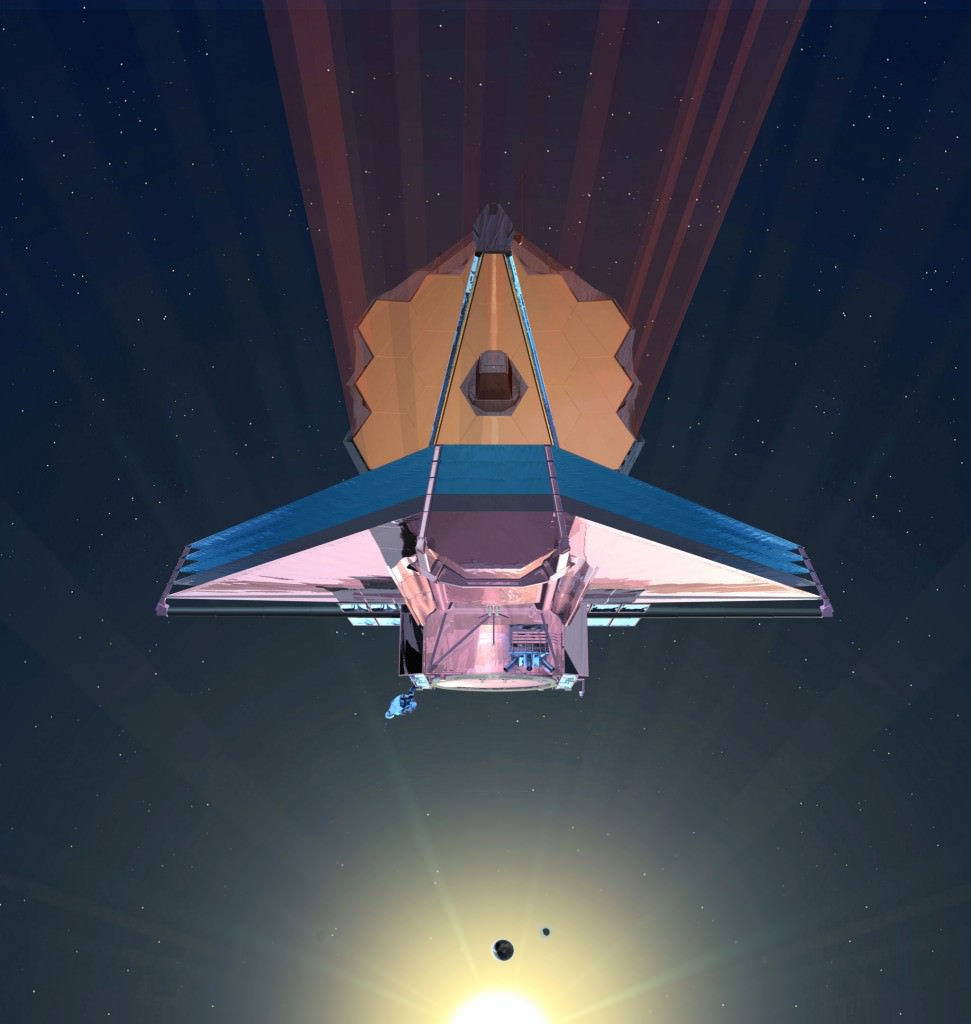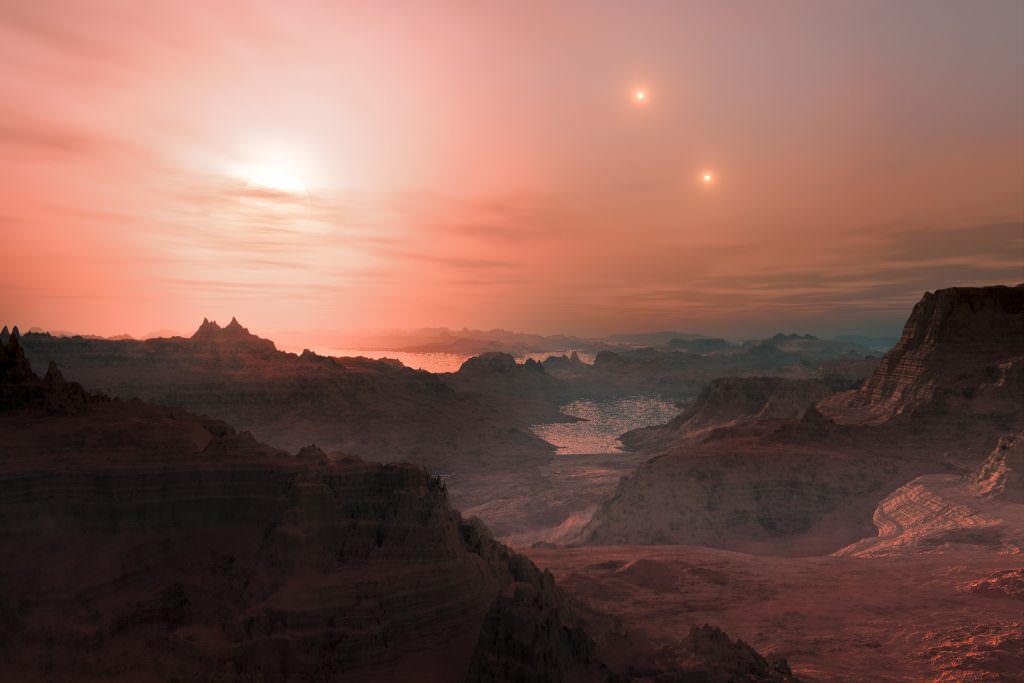How Would Rain be Different on an Alien World?
By Matt Williams
On Titan, Saturn’s largest moon, it rains on a regular basis. As with Earth, these rains are the result of liquid evaporating on the surface, condensing in the skies, and falling back to the surface as precipitation. On Earth, this is known as the hydrological (or water) cycle, which is an indispensable part of our climate. In Titan’s case, the same steps are all there, but it is methane that is being exchanged and not water.
In recent years, scientists have found evidence of similar patterns involving exoplanets, with everything from molten metal to lava rain! This raises the question of just how exotic the rains may be on alien worlds. Recently, a team of researchers from Havard University conducted a study where they researched how rain would differ in a diverse array of extrasolar planetary environments.
This research was conducted by Kaitlyn Loftus, a Ph.D. student from Harvard’s Department of Earth and Planetary Sciences. Her supervising professor (and co-author on the study) was Robin D. Wordsworth, who leads the Wordsworth Planetary Climate and Atmospheric Evolution Research Group at Harvard’s School of Engineering and Applied Sciences (SEAS).

Research into precipitation and records of past rainfall on Earth has taught scientists a great deal about the dynamical nature of its climate. Unfortunately, this same research is not yet possible with exoplanets, which prevents scientists from being able to place tighter constraints on their potential habitability. However, knowledge of these conditions on Earth has helped scientists to predict planetary climates Mars, and Titan.
For the sake of their study, Loftus and Wordsworth examined how this could be applied to exoplanets as well. As Loftus explained to Universe Today via email:
“A key component of habitability is climate (to test whether a planet can support liquid surface water). A major driver of uncertainty in understanding climate in different planetary environments (even, say, the current transition of modern Earth to higher CO2 levels) is how clouds behave. Precipitation is a key way clouds “die,” so understanding how precipitation works can help us constrain cloud behaviors and eventually better predict planetary climate.
“Precipitation additionally helps control how much water stays in an atmosphere. As water vapor is a very good greenhouse gas, this balancing of how much water is in an atmosphere can also impact climate... Finally, rainfall is an essential component of the negative feedback mechanism to stabilize planetary climates (the carbonate–silicate cycle) that underlies the concept of the exoplanet “habitable zone.”

This knowledge will be essential, Loftus added, when next-generation telescopes join the search for potentially habitable exoplanets. In the coming years, astronomers and astrobiologists will be able to conduct direct imaging studies of exoplanet atmospheres. Having models in place that predict how clouds and water vapor behave on these planets will go a long way towards measuring their habitability.
While predicting the precipitation patterns of a distant exoplanet is highly difficult, one component that can be easily understood is the behavior of individual raindrops. Given that every raindrop that falls from a cloud is governed by a combination of fluid dynamics, thermodynamics, and atmospheric conditions, their study can reveal much about a planet’s climate.
Loftus and Prof. Wordsworth proceeded to show how three key properties could be calculated based on three key properties: their shape, their falling speed, and the speed at which they evaporate. Said Loftus:
“Clouds and precipitation are very dependent on what happens on very small size scales (cloud drops/raindrops ~microns-millimeters), medium-size scales (clouds, kilometers-10s kilometers), and very large scales (planetary-scale water budgets). Representing all these scales accurately in a single model isn’t tractable with modern (or foreseeable future) computers.”

“What we’re trying to do is use the simplest and best-understood component of the water cycle—raindrops below a cloud—to constrain what’s ‘important’ among all the complexity,” she added. Important is certainly a subjective term, but in this case, it entails tracking how much atmospheric water vapor will utlimately become water on the surface – a key requirement to the existence of life as we know it.
From these three properties, they were able to obtain a simple expression to explain the behavior of raindrops from more complicated equations. Ultimately, they found that (across a wide range of planetary conditions) it was only raindrops in a relatively narrow size range that could reach the surface. As Loftus indicated, their research could allow for improved representations of rainfall in complex climate models in the future:
“Right now a lot of what we understand about how clouds and precipitation work in a larger climate system is driven by what we see (and have seen) on Earth. However, this leaves a lot of uncertainty in how valid it is to transfer such empiricisms to regimes where many physical conditions are different.
“[S]o there are a lot of big question marks surrounding any non-modern Earth science questions that depend on how clouds/precipitation behave. This work is trying to slowly build up the capacity to develop theoretically-based expectations for how clouds and precipitation should behave outside of modern Earth and to ultimately put better constraints on those big question marks.”

This will come in very handy when the James Webb Space Telescope launched on October 31st, 2021. Using its advanced suite of infrared instruments and spectrometers, the James Webb will be able to study the atmospheres of smaller-mass exoplanets that orbit more closely to their stars – i.e., where potentially-habitable rocky planets are most likely to reside.
These will allow scientists to determine the chemical composition of these planets’ atmospheres, which may include water vapor and other telltale “biosignatures.” Other telescopes, such as the ESO’s Extremely Large Telescope (ELT), the Giant Magellan Telescope (GMT) and the Nancy Grace Roman Space Telescope will be able to conduct similar direct imaging studies of exoplanets.
These instruments will allow for unprecedented levels of exoplanet characterization, which is something exoplanet studies have been transitioning into in recent years. With over 4000 confirmed exoplanets available for study, astronomers are no longer exclusively focused on finding promising candidates for study. At this juncture, it’s about figuring out which of these candidates meets the requirements for life!
The results were published in a paper, titled “The Physics of Falling Raindrops in Diverse Planetary Atmospheres,” that recently appeared online and was submitted for publication to the Journal of Geophysical Research: Planets.
Further Reading: arXiv
The post How Would Rain be Different on an Alien World? appeared first on Universe Today.

March 6, 2021 at 01:08AM
via Universe Today read more...

Post a Comment